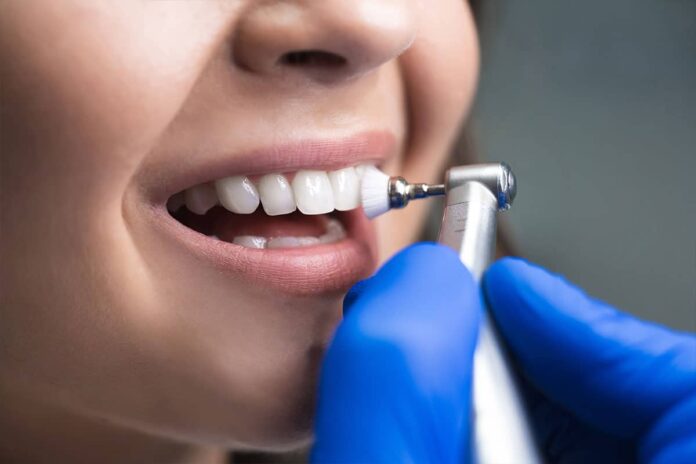Dental restorations must have a polished, smooth surface to serve both functional and aesthetic purposes. To achieve a faultless surface on restorations and guarantee patient satisfaction and durable outcomes, dental polishers, created expressly for this use, are essential.
It can be difficult to choose the best dental polishers because there are so many options. We offer thorough guidance in this article to assist you in selecting the ideal dental polishers for your practice.
What Are Dental Polishers?
Dental restorations made of composites, ceramics, and metal alloys can have surface imperfections, stains, and roughness removed with the help of rotary dental polishers. To meet distinct clinical needs, they come in a variety of forms, sizes, and abrasive materials. Typically, dental polishers are constructed of silicone, diamond, or aluminum oxide, each of which has special qualities for a variety of polishing activities.
How to Select Dental Polishers?
It is crucial to take the material of the restoration into account when choosing dental polishers. Different materials call for various polishing methods and abrasive levels. For instance, silicone polishers that offer a high shine and little heat generation are frequently needed for composite restorations. Polishers made of diamond or aluminum oxide are frequently used in ceramics or metal alloys. It will be easier for you to select the ideal dental polishers and get the best results if you are aware of the characteristics of each restoration material.
Consider Grit Size and Shape
Dental polishers’ abrasiveness and the amount of surface roughness they can remove are both governed by their grit size. Smaller grit sizes offer a smoother finish whereas bigger grit sizes are more abrasive and suited for first rough polishing. Choose polishers based on the desired level of polishing needed for each restoration. To ensure effective and efficient polishing, the shape of the polishers should also match the contour and surface anatomy of the restoration.
Consider Speed and Pressure
Achieving the desired polish depends significantly on the speed and pressure with which the tooth polisher is used. High speeds and excessive pressure can cause overheating, damage to the repair, and patient discomfort. A flawless dental polish requires the use of proper technique, which includes controlled speed and soft pressure.
About Quality and Sterilization
To obtain consistent and dependable results, it is essential to invest in high-quality dental polishers. Search for trustworthy producers of dental polishers that adhere to industry requirements. Make sure the polishers are also compatible with the sterilization techniques you choose. Others might need chemical sterilization or disposable choices, while some polishers can be autoclaved.
Bottom Line
For the best dental polish and patient satisfaction with restorations, choosing the appropriate dental polishers is crucial. When selecting dental polishers, take into account the restoration material, grit size, form, speed, and pressure. Prioritise quality as well as make sure that it is compatible with your sterilization techniques. Dental professionals can obtain superior surface finishes by adhering to these recommendations and using the appropriate polishing processes, which will increase the durability and aesthetic appeal of dental restorations.
Read Also
- How to Find a 5-Star Dentist Near YouChoosing a dentist is more than just finding someone who can clean your teeth. It’s about selecting a trusted partner in your long-term oral health. A 5-star dentist not only provides excellent clinical care but also delivers a positive patient experience, from the moment you walk in until the moment you leave. Whether you’re new… Read more: How to Find a 5-Star Dentist Near You
- Your Easy-Peasy Guide to Brewing Amazing MatchaHey there! So, you’ve heard all the buzz about matcha – that vibrant green powder that’s not just pretty but packed with good stuff? It can seem a little fancy and intimidating at first, but trust me, making a delicious cup at home is simpler than you think. Forget complicated ceremonies for now; let’s just… Read more: Your Easy-Peasy Guide to Brewing Amazing Matcha
- Embracing Holistic Wellness: Insights from a Lansing, MI Health CenterReframing Health: Moving Beyond Symptom Management Treating only symptoms often offers quick relief, yet long-term results stay out of reach. When care zeroes in on isolated complaints, the bigger picture, such as stress, behavior, or lifestyle, often gets missed. Research shows that whole-person care, which looks at physical, emotional, and environmental factors, yields better outcomes… Read more: Embracing Holistic Wellness: Insights from a Lansing, MI Health Center
- VO₂ Max Testing Explained: What It Is & Why It Matters for Your HealthVO₂ max sounds like a term reserved for elite athletes, but it’s among the most accurate measures of your lifetime and general condition. Moreover, it goes beyond performance. Monitoring your VO₂ max will help you to ascertain your body’s capacity to control stress, its oxygen consumption efficiency, and your internal ageing process. If you have… Read more: VO₂ Max Testing Explained: What It Is & Why It Matters for Your Health
- So, what exactly is matcha?Think of matcha as green tea turned up to eleven! Instead of steeping leaves and tossing them out, matcha is made by grinding whole green tea leaves into this super-fine, vibrant green powder. You whisk it right into hot water (or milk!), meaning you’re drinking the entire leaf. That’s why folks say you get way… Read more: So, what exactly is matcha?
- How to Tell When It’s Time for Professional Senior Care SupportCaring for an aging loved one is a journey filled with love, patience, and difficult decisions. One of the toughest choices families face is knowing when it’s time to seek extra help. In this article, trusted Los Angeles caregivers for seniors explore the signs that it might be time to bring in professional support, not… Read more: How to Tell When It’s Time for Professional Senior Care Support







